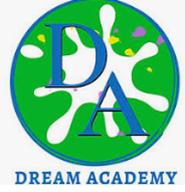




|
|
|
CONTACT 732-281-7122 / 732-423-8052 |
|
COMPUTERS-DATA-ANAYTICS |
|
A data analyst is not into coding as much as a data scientist does, but he must have programming language knowledge but knowledge of statistical programming languages like R/ Python is expected. He must also have knowledge of data bases like SQL (structured query language) to perform data analysis. Though excel is not as powerful as R or Python, a knowledge on excel will help to work on smaller data sets which is the best option for start-ups. Data visualization and presentation is an integral part of the data analyst job, hence knowledge of tableau and business presentation tools like MS Excel, MS PowerPoint is also essential.
The data analyst course topics are:
Statistics
Data analytics with R SAS Tableau
The data analyst course syllabus in general would be:
Data and overview of data types Introduction to Data Types Numerical parameters to represent data
a. Mean b. Mode c. Median d. Sensitivity e. Information Gain f. Entropy
Statistical parameters to represent data
Probability
Uses of probability Need of probability Bayesian Inference Density Concepts Normal Distribution Curve
Statistics Point Estimation Confidence Margin Hypothesis Testing Levels of Hypothesis Testing
Data clustering Association and Dependence Causation and Correlation Covariance Simpson’s Paradox Clustering Techniques
Data testing techniques Parametric Test Parametric Test Types Non- Parametric Test Experimental Designing A/B testing
Regression modelling and Distributions Probability distributions and regression analysis Linear regression analysis and model Normal distribution and binomial distribution Logistic and Regression Techniques Problem of Collinearity WOE and IV Residual Analysis Heteroscedasticity Homoscedasticity
Introduction to R programming Various data types in R Built-in functions in R Subsetting methods Data cleansing Data inspection Data import from excel and other spreadsheets and text files into R Data import from SPSS, sas7bdat Installation of packages for database import Fundamentals of Web scrapping Summarize data
Exploratory data analysis Overview of EDA Understand and implement EDA on various data sets Understand the EDA functions Work with box plots, segment plots etc.
Data visualization in R Data visualization and graphical functions and representations in R Plotting various graphs like tableplot, histogram, boxplot Understand the working of Deducer, and R commander Understand the graphical functions in R Customize graphical parameters to improvise the plots Overview to spatial plots
Data mining and clustering techniques Introduction to data mining Overview of machine learning Machine learning algorithms – supervised and unsupervised K-Means clustering technique Association rule Sentiment analysis Predictive analysis techniques Annova technique
Decision Trees and Random forest techniques Concept of decision trees Classification rules of decision trees Understand the algorithms for creating decision trees Create perfect decision trees Concepts and features of decision trees Working on Random forest Entropy and gaining information
SAS Understand the implementation of SAS and the use cases Understand the different data types in SAS Understand data step and procedural step Understand the basic procedural steps Overview of SAS GUI Introduction to SAS Window and its contents Use of formats and informats in SAS Create instream SAS Data set
Process and Integrate with data Data import in SAS Work with permanent and temporary data sets Set and merge statements Manipulate influx of data sets into SAS
Customize dataset Program with SAS data sets Simplify processing with SAS using conditional and iterative processing Date and time functions Numeric and character functions SAS Arrays SAS statistical procedures
Advanced statistical procedures with SAS Overview of clustering Concepts of hierarchical clustering Concepts of Non-Hierarchical clustering(K-clustering) Simple, multiple and logistic regression
Data optimization variables Concepts of data optimization and optimization models Introduction to ODS and its benefits Generate rtf, pdf, html, and doc files
SQL Work with select statements and other select statement clauses Work with JOINS and UNIONS Create new tables CASE expression
SAS Macros Overview and benefits of using SAS Macros Macro variables Macro code constituents Positional parameters to Macros
Data visualization Introduction to data visualization Introduction to Tableau 10 Data blending and establishing a connection
Visual analytics Manage metadata and extracts Data granularity using marks card Work with sort, filter and grouping (static and dynamic) Graphic visualization
Dashboard, stories and Mapping Introduction and creation of a dashboard layout Introduction to story point Introduction to maps and web mapping services Design dashboard for devices Interact using action Create background images Create polygon maps Work with custom geocoding
Charts in Tableau Work with Gantt, waterfall, pareto charts Work with control charts, funnel charts, box and whisker’s plots
Integration of Tableau, R and Hadoop Introduction to big data, R and Hadoop concepts Integrate R with Hadoop Integrate Tableau with R Integrate visualization using Tableau |
|
|
